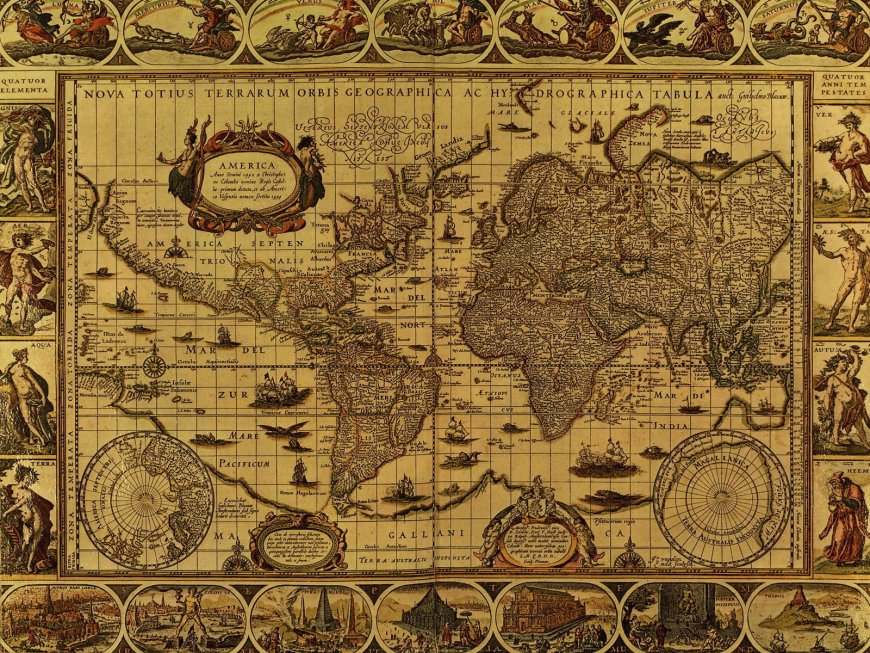Timeless Treasures: Discover the World of Original Collectible Maps for Sale

Original collectible maps are more than just navigational tools of the past. They are stunning works of art, time capsules of exploration, and tangible representations of humanitys ever-changing understanding of the world. For collectors, historians, and art enthusiasts, these maps hold an enduring charm. The market for original collectible maps for sale has grown steadily in recent years, fueled by a renewed appreciation for craftsmanship, history, and uniqueness in a digital age.
This article dives into the fascinating world of antique maps, exploring their value, history, types, and what to consider when looking to purchase one. Whether you're a seasoned collector or a curious newcomer, you'll uncover why these beautiful documents continue to captivate minds across generations.
The Allure of Antique Maps
Original collectible maps for sale evoke a powerful sense of nostalgia and wonder. They provide a glimpse into how explorers, rulers, and scholars perceived the world centuries ago. Beyond geographical information, these maps often reflect the political ideologies, religious beliefs, and artistic styles of their time.
Each map tells a story. Some depict mythical sea creatures in uncharted waters. Others show territories long renamed or erased. The hand-drawn coastlines, calligraphy, and colored embellishments make them desirable not just for their historical value but for their aesthetic appeal.
Understanding the Value of Collectible Maps
The value of an antique map depends on several key factors. Age is important, but not always decisive. A 16th-century map might be less valuable than an 18th-century one if the latter is rarer or in better condition. Cartographer reputation also plays a significant role. Maps created by figures like Gerardus Mercator, Abraham Ortelius, or John Speed can command premium prices due to their historical importance and artistry.
Condition is paramount. Collectors look for maps with minimal damage, intact margins, original color (if any), and no modern alterations. Provenancethe documented history of ownershipcan also significantly increase a maps desirability and price.
Subject matter is another factor. Maps of popular regions like the Americas, early depictions of Africa or Asia, and those showcasing historical events like early explorations or colonial expansions tend to be more in demand.
Popular Types of Collectible Maps
Maps come in many forms, and each category offers unique characteristics for collectors.
World maps, particularly those from the Renaissance and Enlightenment periods, provide a fascinating look at early global perspectives. Many include artistic elements like cartouches, cherubs, and elaborate compass roses.
City plans or birds-eye views are beloved for their intricate detail and charm. They offer a visual narrative of historical urban life, showcasing architectural layouts, fortifications, and marketplaces of the time.
Sea charts or nautical maps appeal to maritime history lovers. These often feature navigational routes, wind roses, and detailed coastal outlines. Some include imaginative illustrations like sea monsters or mythical islands, revealing how little was once known about the oceans.
Celestial maps or star charts are also collectible, mapping constellations and astronomical bodies as understood centuries ago. These combine scientific knowledge with beautiful, often symbolic illustrations rooted in mythology.
A Glimpse Into the Past: Cartographers Who Shaped History
Many original collectible maps for sale were created by legendary cartographers whose work laid the foundation for modern geography.
Gerardus Mercator revolutionized map-making with the Mercator projection, which allowed navigators to chart a straight-line course across the ocean. His maps from the 16th century are sought after for both their technical significance and beauty.
Abraham Ortelius is known for producing the first modern atlas, Theatrum Orbis Terrarum, in 1570. Each map in his collection is a snapshot of 16th-century geographical knowledge and Renaissance design.
John Speed was a prominent English cartographer in the 17th century, whose detailed maps of Great Britain and Europe are prized by collectors. His maps often include coats of arms, portraits of monarchs, and historical notes.
These figures, and many more like them, infused science with artistry, making maps that are just as decorative as they are informative.
Where to Find Original Collectible Maps for Sale
The internet has made it easier than ever to find and purchase original collectible maps for sale. Reputable online antique dealers and auction platforms provide access to maps from around the world, complete with photographs, descriptions, and provenance details.
Antique map stores and galleries remain a trusted and rewarding place for in-person browsing. They offer the chance to physically examine maps, consult with knowledgeable experts, and discover rare finds not listed online. Trade fairs, exhibitions, and estate auctions are also valuable resources for collectors.
Its essential to verify the authenticity of any map before purchase. Reproductions, while beautiful, are not considered collectible and have significantly less value. Always ask for documentation and consult reference books or certified appraisers if in doubt.
How to Start Your Collection
Starting a map collection doesnt require a large investmentjust curiosity and care. Begin with a focus, such as maps of a particular region, time period, or cartographer. This will help refine your searches and give your collection thematic coherence.
Invest in proper storage and display. Antique maps are delicate and require protection from sunlight, humidity, and pollutants. Acid-free mounts, UV-protective glass, and climate-controlled environments can help preserve their integrity.
Educate yourself continuously. Read collector guides, attend exhibitions, and engage with online communities. The more you learn, the better your eye for detail, value, and historical context will become.
Investment Potential of Collectible Maps
While many collectors purchase antique maps for their beauty and historical value, they also represent a strong niche investment. Rare maps in excellent condition tend to appreciate in value over time, especially as global interest in tangible historical assets grows.
However, like any collectible market, map investment requires patience and expertise. Prices can fluctuate based on trends, availability, and buyer interest. For long-term gains, focus on acquiring rare and well-preserved items with documented provenance.
Consulting with professionals and experienced collectors can help you make informed decisions that balance aesthetic enjoyment with financial prudence.
Ethical Considerations in Map Collecting
As interest in original collectible maps for sale increases, so does the responsibility to collect ethically. Avoid purchasing maps that may have been looted or removed from rare books or archives without permission. Authenticity also becomes critical in preventing fraud or misrepresentation.
Reputable dealers will provide provenance, condition reports, and honest assessments. Transparency in pricing and origin ensures that the world of antique map collecting remains a respectful and sustainable pursuit.
The Role of Original Maps in Modern Design
Beyond collecting, antique maps have found a new home in interior design. Framed maps make striking wall art, infusing rooms with vintage elegance and intellectual depth. Offices, libraries, restaurants, and homes often feature original maps as focal points, celebrating both artistry and history.
Interior designers frequently use maps to reflect personal storiesperhaps a map of an ancestors homeland or a chart of an explorers journey. Their aesthetic blends seamlessly with rustic, industrial, and even minimalist spaces, proving that history never goes out of style.
Conclusion: Preserving the Past, One Map at a Time
Original collectible maps for sale offer more than decoration or investmentthey are enduring legacies of human exploration and curiosity. Each map holds a fragment of our collective journey, a visual narrative that stretches across continents and centuries.
Whether youre a scholar, investor, or enthusiast, the world of antique maps invites you to explore the past in the most captivating way. In a time where digital maps are disposable and ever-changing, these timeless treasures remind us of a slower, more thoughtful erawhere every line drawn was a leap into the unknown.
Owning an original map is like owning a piece of historya unique moment captured on paper, preserved against the currents of time








































